Total War: Warhammer III features eight factions and 11 legendary lords that are available by default. Another one can be unlocked later, and there’s even a slight twist at the end. Naturally, you might be wondering which one to choose when you’re just starting out. Here’s our Total War: Warhammer III guide to help you with the best legendary lord for your first campaign.
Note: For more information, check out our Total War: Warhammer III guides and features hub.
Total War: Warhammer III – The best faction and legendary lord to choose for your campaign
For the sake of clarity, this guide assumes that you’re either new to Total War (and the Warhammer games), or that you’re still on the fence about your ideal character. Granted, long-time fans and veterans would have their favorites by now, and that’s fine as well.
Don’t pick the “monogod” Chaos factions
“Monogod” refers to the daemon factions that follow one specific deity: Khorne, Slaanesh, Nurgle, and Tzeentch. While it’s true that each faction boasts strong units, their rosters tend to fill a certain niche, and you’d find that there are gaps that need to be rectified.
- Khorne – Pure melee with strong/armored infantry; has no magic options or ranged units (barring an artillery piece).
- Slaanesh – Pure melee with spellcasting options; high armor-piercing but low defenses means that units have to flank or they’d take heavy losses in straight-up bouts.
- Nurgle – Pure melee with spellcasting options (including healing); high HP and defense, but egregiously slow movement speed.
- Tzeentch – Heavy focus on ranged combat and spellcasting; units are protected by barriers (i.e., armor that gets restored over time as long as the unit isn’t taking damage). The Tzeentchian faction led by Kairos Fateweaver is probably the strongest contender that I would recommend due to the barrier perks, but do try to avoid long melee engagements because your units will still get beat down.
Note: All factions/leaders in Total War: Warhammer III are able to recruit units from other factions that they’ve formed alliances with due to the outposts mechanic. However, since monogod Chaos factions rarely get along, this can sometimes be an issue as well.
Good for intermediate level: Legion of Chaos (Daemon Prince)
If the monogod factions fulfill a certain niche, then the Daemon Prince is the jack of all trades who can potentially master a few tricks here and there. This character can recruit all units from the other Daemon factions (and they’ll often buddy up with him as he’s tearing up the good guys of the world). Even better, he gains access to multiple weapons, armors, item sets, heroes, and gameplay mechanics that the other Daemon factions have.
The biggest downside, however, is that the Daemon Prince isn’t what I would call a “beginner-friendly” lord. He doesn’t necessarily teach you the basics that you can expect from most other nations/races. For instance, he doesn’t bother with trade agreements or casualty replenishment/gold as a post-battle option. Likewise, he needs different types of barracks in minor settlements just to recruit particular units (i.e., most factions will only need one barracks chain in a province). Still, if you’d like to learn more, you can visit our Legion of Chaos/Daemon Prince guide series.
Good for beginners: Kislev (Tzarina Katarin)
Kislev can be considered as the beginner faction for Total War: Warhammer III. It has several nifty mechanics that you can learn, as well as a fleshed-out roster with units that have multiple functions. It’s got melee combatants to hold the line, ranged gunners, bear cavalry, artillery, and hybrid units that can switch weapon types. Their spellcasters can also use Ice and Tempest magic, allowing control of the battlefield.
Perhaps the best part about playing as Tzarina Katarin of Kislev is that a lot of Order (i.e., good) factions want to befriend you. As such, it’s easy to earn gold via trade agreements, unit access through alliance outposts, and eventual confederation with Kislevites. Later on, you might even unlock another legendary lord. If you’re interested, you can take a look at our Kislev/Tzarina Katarin guide series.
Good for beginners (sorta): Grand Cathay (Miao Ying)
Similar to Kislev, Grand Cathay has a robust roster with everything you need. From melee troops who can hold the line, to an assortment of artillery and ranged units (i.e., bow wielders and gunpowder). It’s also got flying units in the form of balloons, with missile and bombardment capabilities. The faction has spellcasters and legendary lords that can turn into dragons.
Grand Cathay’s mechanics include a caravan system to earn gold (and encounter some events/battles along the way), as well as a Wu Xing Compass to gain buffs. Then again, it also relies on the Harmony system, a balance between Yin and Yang. You need to master it to gain more benefits, or your regions and units could suffer.
Good for beginners (sorta): Ogre Kingdoms (both)
One of the best things about the Ogre Kingdoms is that they’ve got a beefy roster. You’ll see Ogre Bulls, Sabretusks, Maneaters, Giants, and more. Likewise, there are some powerful ranged and artillery options, like the Leadbelchers and the unrivaled Ironblaster (with a whopping 1.5k missile strength stat).
However, the roster is also one reason why it’s not a prime candidate for newcomers. The thing is, Ogre Kingdoms predominantly have monster-type units. They have high health and they hit hard. But, they’re also quite fewer in number (i.e., 16 to 24 with the large unit size selected). Their low-tier units, Gnoblars, are more plentiful and cheaper, but they have pathetic stats.
Note: In my opinion, Skrag the Slaughterer might be more viable for newcomers, as he’s mostly surrounded by unplayable factions in the soft underbelly of the Empire.
Total War: Warhammer III is available via Steam, Epic Games, and the Xbox Game Pass for PC. For more information, check out our guides and features hub.

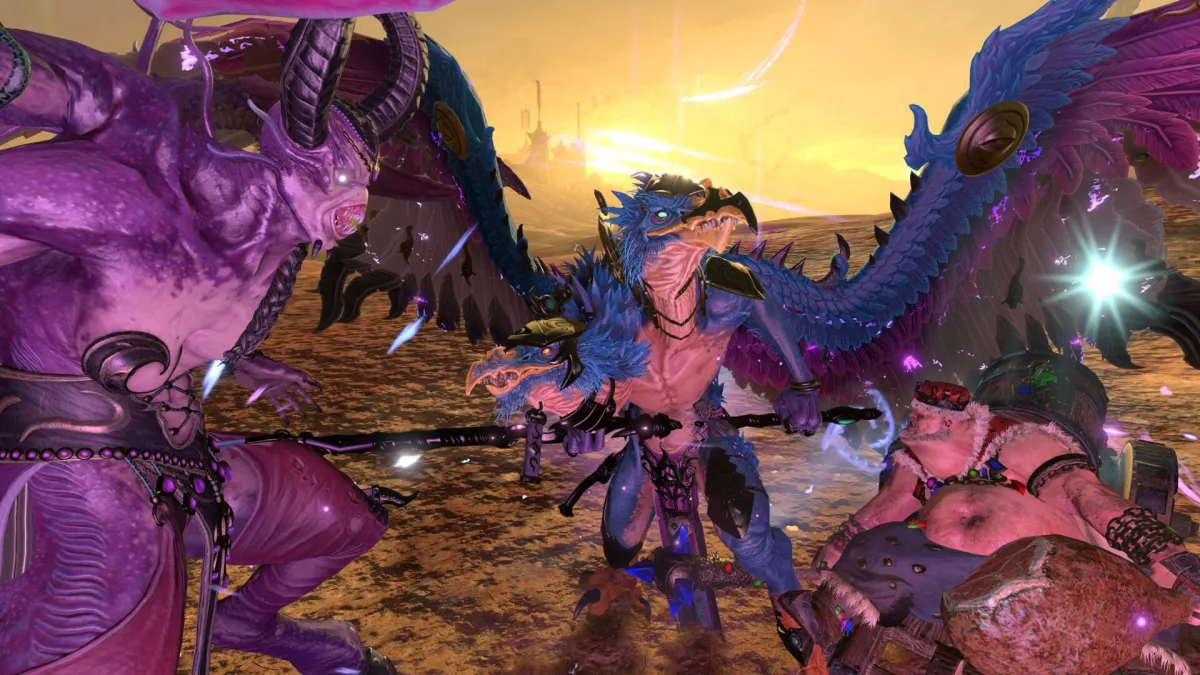

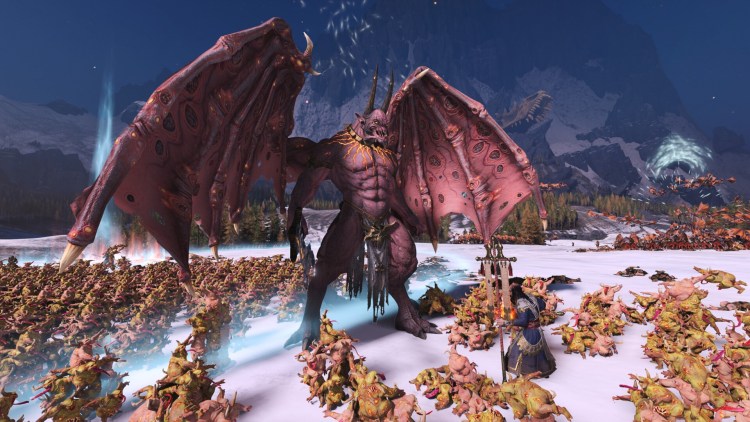
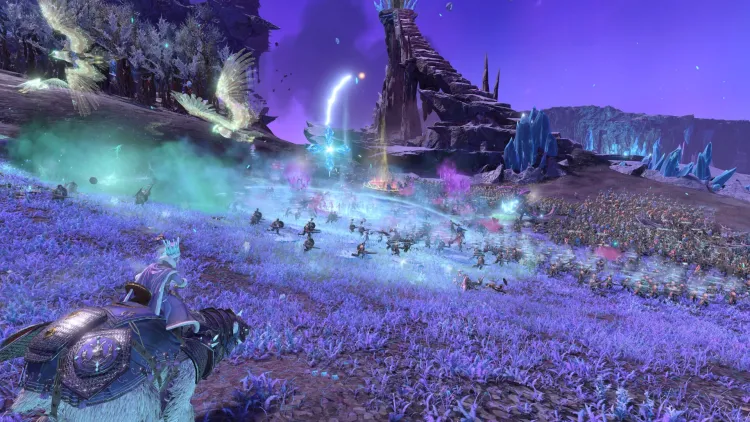
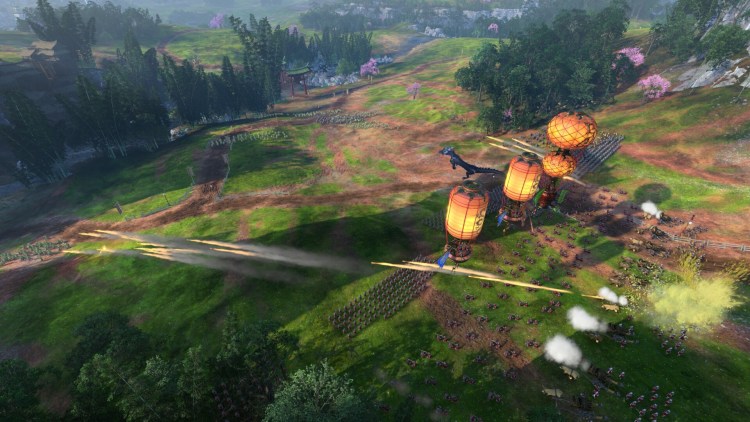
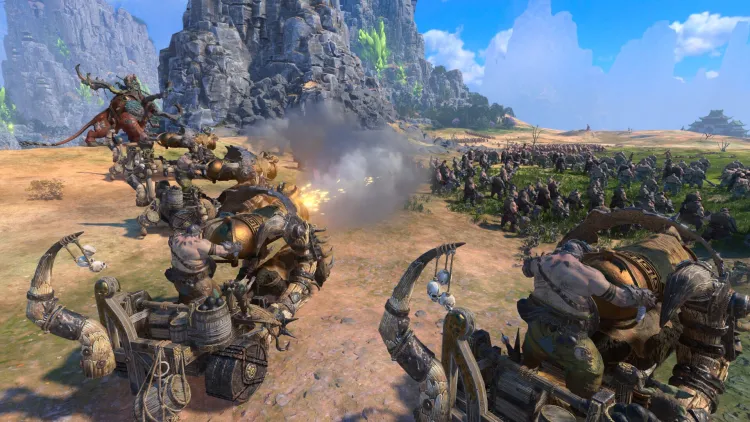




Published: Feb 17, 2022 12:25 AM UTC